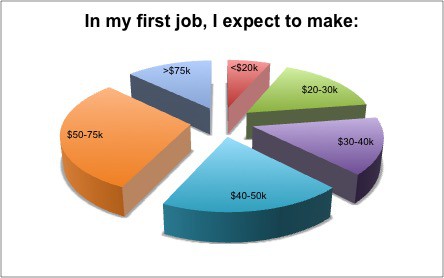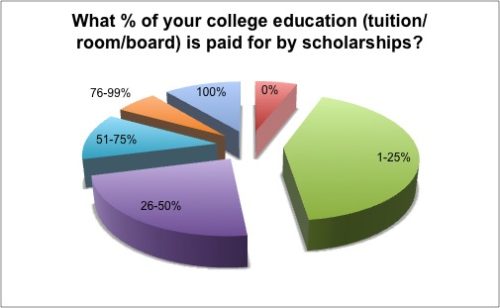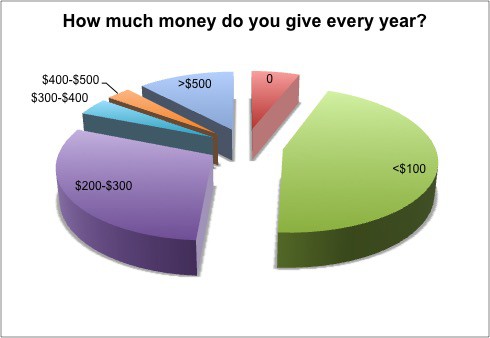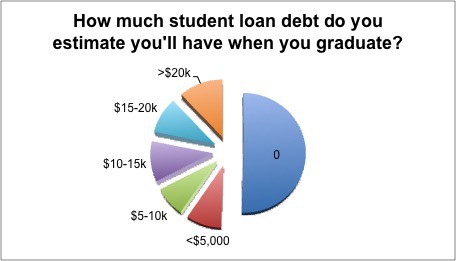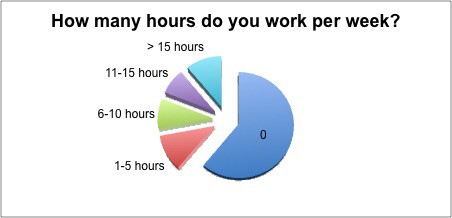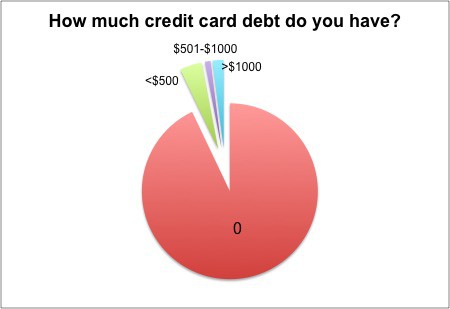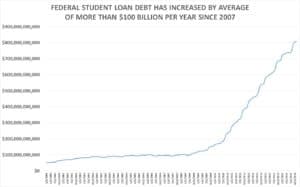I recently gave a talk at our Cru meeting on Money (you can download, and freely use, my notes here).
4 Steps to Making the Most of Your Money
- Acknowledge your default – The American Dream
- Replace the American Dream with something weightier, something better
- Overcome any obstacle (debt)
- Live simply, Save wisely, and Give generously
The bulk of the talk was focused on debt – credit card and student loan debt.
I took a poll of the audience (using directpoll.com which worked really well for us – students could see the live results on screen as they responded). We had about 100 participate in the online poll. I thought the results were very interesting so I thought I’d share them:
62% think they will earn over $40k.
National surveys say that only 20 percent of graduates will earn over $40,000 in their first year on the job.
And only 59% will earn more than $25,000.
So our students are either REALLY gifted. Or a LITTLE over-optimistic.
29% of our students have at least half of their college paid for.
52% have at least 1/4 paid for.
94% have at least some scholarship.
This wasn’t altogether surprising – our students tend to be pretty smart. For whatever reason we attract a lot of engineers and honors students.
51% give less than $100/year.
81% give less than $300.
I admit – I thought this would be higher! Obviously something we can help our students grow in.
63% of tithers started tithing 10 percent or more between childhood and their twenties.
51% will owe $0.
Only 12% will owe more than $20k
Nationally: Seven in ten college graduates have student loans. The average new graduate in 2015 walked the stage $35,000 in the hole.
Granted, I often hear from graduates that they didn’t find out until after graduation that their mom and dad took out loans for them that they themselves have to pay back. So some students may receive a not-so-fun surprise graduation gift from mom and dad.
65% have no loans.
Only 12% have more than $10k
I’m sure the Cru meeting audience skews toward freshmen (who naturally have less debt than upperclassmen). I would guess at least 1/3 of the students were freshmen.
61% don’t have jobs
Only 28% work more than 5 hours a week,
92% don’t have any credit card debt! I admit. I was shocked by this number. Many said they don’t even own credit cards. Yet they don’t carry cash. Not sure how they pay for things!? Maybe debit cards?
Nationally -Â 68% of college students have credit card debt — with an average of $600 in debt.
